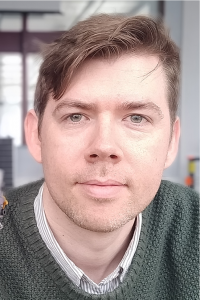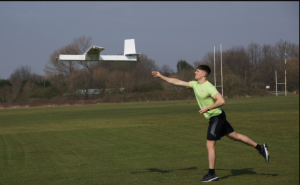TEA Winner 2021: Ben Parslew and ‘Drone From Home’: Building Social Impact into Courses.
 Ben Parslew is a lecturer in the school of Mechanical, Aerospace and Civil Engineering, and this is part of our series of blog posts by Teaching Excellence Award winners 2021. Ben led a winning team for the Drone from Home project:
Ben Parslew is a lecturer in the school of Mechanical, Aerospace and Civil Engineering, and this is part of our series of blog posts by Teaching Excellence Award winners 2021. Ben led a winning team for the Drone from Home project:
Usually, Aerospace Engineering requires in-person learning from the unit’s teaching team. Facing the challenges of Covid-19, the Aerospace Design team adapted by creating an innovative and supportive new structure for the course, endeavouring to deliver the same high quality teaching at a distance as they would in person.
In order to achieve this, they set about creating first a bespoke virtual learning environment (VLE), complete with a flight simulator and engaging content, designed to give students a similar experience to the one they would have had in a lab. They provided drone construction kits for students to use at home, and then, through a combination of the VLE, small group tutoring and online seminars, they helped students to build their own working and flyable drones, from the comfort of their own homes.
The Drone from Home programme was an ambitious undertaking. Could you tell us a little bit about your programme, and how it came to be?
From the beginning, this course has always involved students designing and building drones. I’d been involved with it for seven or so years by the time of the first Covid-19 lockdown, which was when we decided we needed a Covid-19-themed project. The concept was: ‘Could a drone or aircraft provide aid to a remote location during isolation?’. And then we realized we needed a way to get the drone construction kit out to the students, which led to the idea of an on campus ‘pick-up station’, where they could collect the kits.

One of the ‘Drone from Home’ pickup kit collection stations.
How were the logistics for organising something like that?
When it became apparent that we wouldn’t be able to mail out the Drone Kits, we decided to set up a ‘collection station,’ and hand out the boxes of kit instead. It was good to know students were keeping busy and able to engage with their programme during a tough time; it felt like both a course project and a semi-humanitarian one. The department was supportive and flexible – while opening the budget.
So, it was the Lockdown’s which encouraged you to run ‘Drone from Home’?
In some ways it was serendipitous how well the project fitted with the wider context of the Covid crisis. Realizing the social impact of having a relevant project theme led to us doing so again the following year, where we ran the course focusing on air quality in Manchester. In this way the theme changes, and so does the role of the aircraft, but the course remains relevant and progressive. Students are more engaged when their studies are research-led, because the work they do as undergraduates is the same type of work as they will be doing during their career upon leaving the university.

A student’s home-built drone being taken for a test flight.
It seems like social impact is a large part of your design for this course?
Yes, and that’s the thing with design work and engineering work – even though much of it is practical, most of it also needs to be digitized and shareable. Designing the aircraft in person, but then making the design available digitally also became a core principle of the project during Covid. One set of students even did an IKEA-style instruction set for building their drone. This year we plan to challenge students to do a similar process as a core part of the course. It’s really nice to be able to include that.
If you had advice to other schools aiming to run a course like this, what would it be?
The more authentic the content of your course – as close as you can get students to working the job they will get after graduating – the more beneficial and engaging it will be. Work towards a unit that is aspractical and as hands-on as possible – but pace the rate at which you bring practical into the course, as it always takes a lot of preparation. For example, when I started this course we ran a reletaively simple practical exercise. But we built on it each year, went down a few dead ends, and slowly built it into what it is now. I always say: “Shoot for the stars” when you start out convening a course, but don’t rush to push too many new things into the project too quickly
How do you keep track of what is or isn’t ‘too quickly’ ?
Using student feedback and staff-student liaison committees to gauge how far you are stretching the students, both in terms of time and in terms of skills, is vital. Using the idea of a ‘study budget’ is helpful, for example – it allowed us to choose materials and techniques for the drone fabrication which would set a clear scope of time the students would need to spend to create them. In the real world, constraints are on money, materials, and person hours, which is after all similar to the concept of study budgets.
Further information
- Add link to the Drone from Home team’s TEA summary 2021
- Department of MACE, School of Engineering
- Teaching Excellence Awards







0 Comments